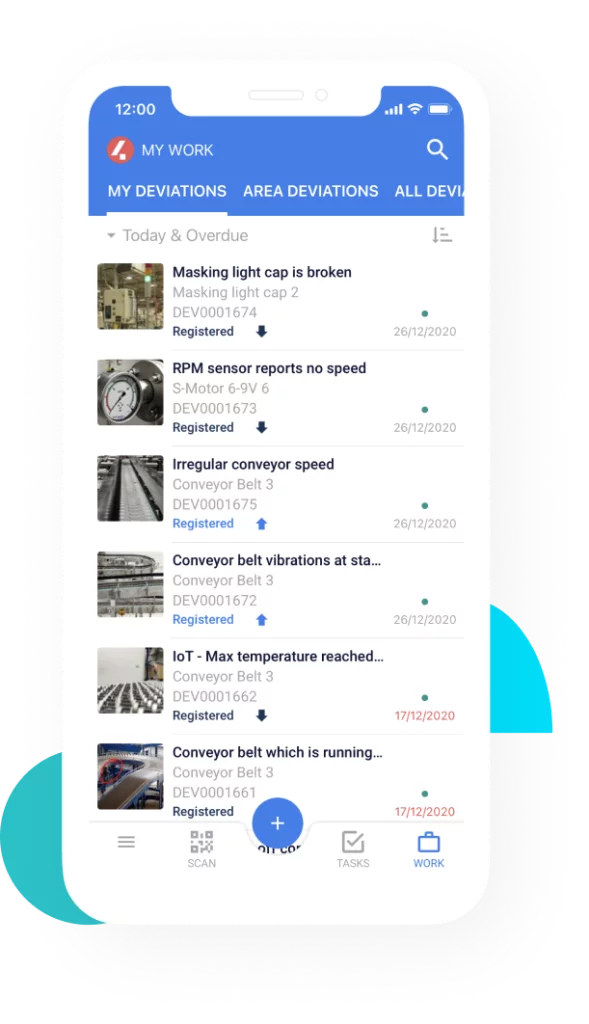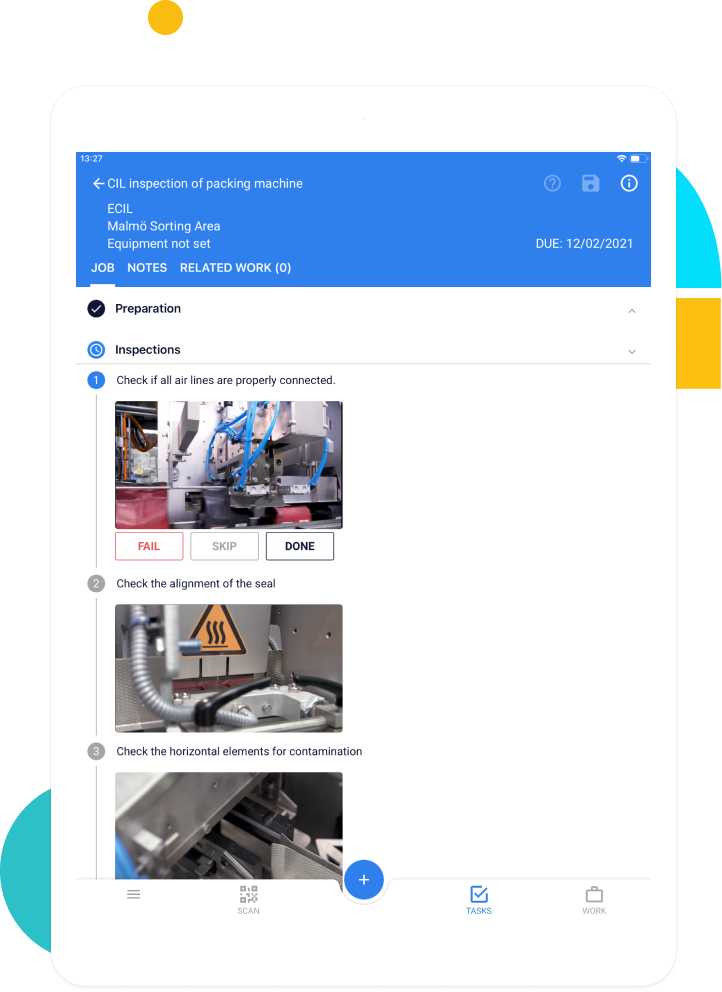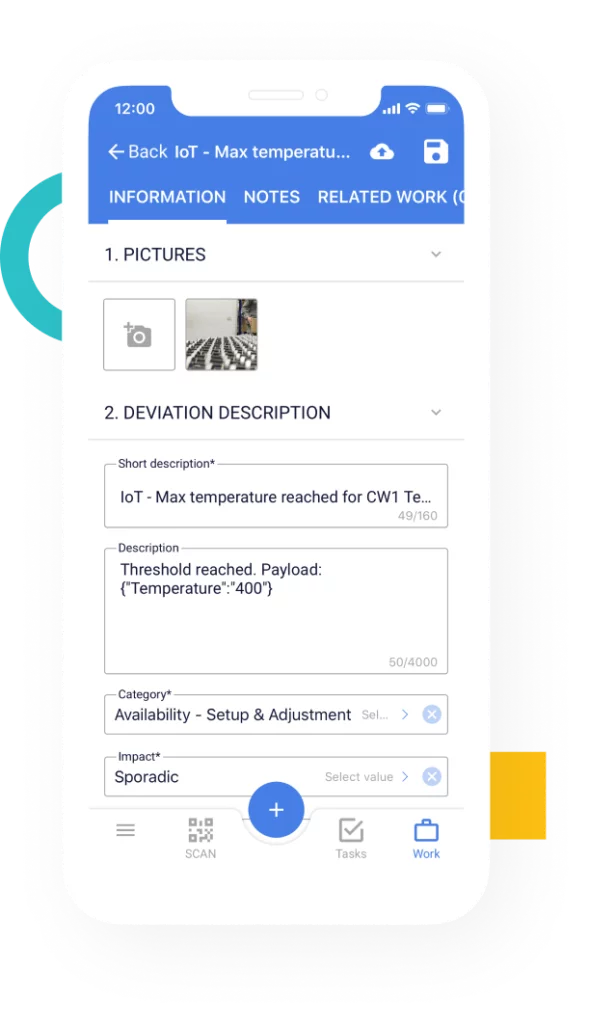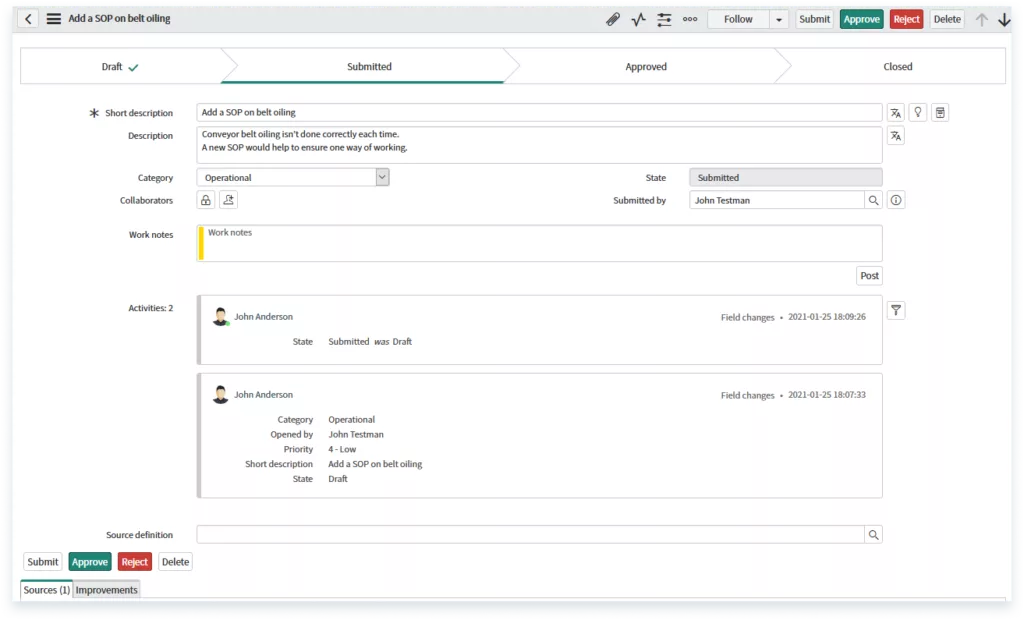
4 ways to take your TPM strategy to the next level
Digitized TPM manufacturing processes help you better manage deviations, maintenance, continuous improvement and more.

Total Productive Maintenance (TPM) is gaining momentum in the manufacturing world—and for good reason. A cornerstone of loss reduction, TPM is a holistic approach to equipment maintenance that seeks to minimize time, production waste, and breakdowns to achieve perfect production. As a strategy, it depends on your workers taking proactive measures to prevent downtime and environmental issues, as well as encourage a safe and healthy work environment.
While you may already be implementing or using TPM manufacturing methods in your plant, chances are they still take the form of paper-based, manual processes. Improving your TPM strategy —and by extension, your overall operation — requires greater visibility into invisible or siloed production processes.
The solution is to digitize TPM manufacturing using a Connected Worker Platform. 4Industry, for example, offers a set of TPM-based modules to help you better manage deviations and maintenance, identify countermeasures, perform root cause analyses (RCA), prioritize continuous improvement, assess and track things like quality and cleanliness using dashboards—and more.
Let’s take a deeper dive into some of the ways digitized TPM can help you take your TPM strategy to the next level:
1. Identify small-scale deviations to prevent plant-wide breakdowns
Deviation management modules let you register, track and analyze equipment breakdowns and other deviations—increasing your control over your production lines. The software provides proactive maintenance steps and countermeasures, enabling you to avoid small-scale failure modes.
Say a bolt is missing on a machine, for example. While the machine will still run for a while without any hiccups, this defect can cause a time-consuming, costly breakdown in the future. With a deviation management feature, you can identify and correct these minor issues in time before they devolve into large-scale problems.

2. Effectively manage cleaning, inspection and lubrication (CIL) tasks
Job management modules support job execution by aggregating work instructions in a user-friendly, interactive interface—facilitating small maintenance tasks that workers can perform at their workstations. Scheduling quick CIL jobs, for example, not only engages workers in the TPM manufacturing process, but also keeps machines running smoothly.
The alternative to managing these tasks in a digital system is to place large bulletin boards next to each machine, populated by papers listing the to-do tasks. During each new shift, operators have to check what they need to do and, in many cases, find a computer and print out the work instructions, which they must tote around the factory. This is hardly an efficient way to manage and perform CIL tasks and other jobs.
With 4Industry, however, supervisors can schedule tasks automatically, along with all the instructions a worker needs to do his or her job. Operators and engineers have direct access to their assigned tasks, supported by knowledge articles, and can perform their jobs consistently using only a smartphone or tablet that displays the most recently approved standard operating procedures (SOP).

3. Manage plant-wide maintenance and predict anomalies
To minimize the risk of equipment failure, Connected Worker solutions like 4Industry support preventive, reactive, and predictive maintenance. The platform gathers data from IoT sensors and other smart devices. Then, using machine learning, it learns when operations are considered normal. Using this information, it can predict if an abnormal situation or breakdown is imminent. Should a data point deviate, the 4Industry app’s rule engine converts the anomaly to a deviation, defect or environment, health and safety (EHS) issue for further analysis.

4. Continuous Improvement
Continuous improvement is the backbone of a good TPM strategy, as it contains all the tools you need to improve your operations. If you don’t continuously improve, then you’ll go backwards. With all deviations, breakdowns and maintenance accounted for and made visible, manufacturers can implement ideas for improvement. The app also makes it easy for anyone to register these ideas and improve the business. Digitized TPM supports various operations dedicated to continuous improvement.
These include:
- Performing root cause analysis (RCA) using the “5 Whys” methodology
- Documenting and improving knowledge articles—maintenance checklists, SOPs, technical manuals, etc.
- Implementing and tracking changes
- Performing assessments to ensure processes are up to speed and standard

Related Articles

Digitize your inspections, audits and checklists

4Industry targets Nordic market via strategic partnership with Advania

